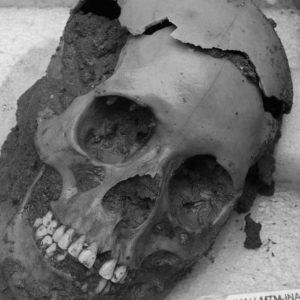Police discovered 150 skulls at a “crime scene” in Mexico. It seems the victims, principally ladies, have been ritually decapitated over 1,000 years ago.
Warning: Undefined variable $post_id in /home/webpages/lima-city/booktips/wordpress_de-2022-03-17-33f52d/wp-content/themes/fast-press/single.php on line 26

When Mexican police discovered a pile of about 150 skulls in a cave close to the Guatemalan border, they thought they were taking a look at a criminal offense scene, and took the bones to the state capital.
It seems it was a really cold case.
It took a decade of exams and evaluation to determine the skulls were from sacrificial victims killed between A.D. 900 and 1200, the Nationwide Institute of Anthropology and Historical past mentioned Wednesday.
A skull found at the archaeological site Templo Mayor sits on display in Mexico City, Friday, Oct. 5, 2012. Alexandre Meneghini / AP"Believing they had been looking at a criminal offense scene, investigators collected the bones and began examining them in Tuxtla Gutierrez," the state capital, the institute, often called INAH, said in an announcement.
The police in 2012 weren't being silly; the border space across the town of Frontera Comalapa in southern Chiapas state has long been suffering from violence and immigrant trafficking. And pre-Hispanic skull piles in Mexico often present a hole bashed by means of each side of every cranium, and have been usually present in ceremonial plazas, not caves.
However specialists said Wednesday the victims in the cave had in all probability been ritually decapitated and the skulls placed on display on a type of trophy rack often called a "tzompantli." Spanish conquistadores wrote about seeing such racks within the 1520s, and some Spaniards' heads even wound up on them.
While normally strung on wooden poles using holes bashed through them - the widespread follow among the many Aztecs and other cultures - specialists say the cave skulls might have rested atop poles, rather than being strung on them.
Apparently, there have been more females than males among the many victims, and none of them had any teeth.
In gentle of the cave expertise, archaeologist Javier Montes de Paz stated people ought to in all probability call archaeologists, not police.
"When individuals discover something that could possibly be in an archaeological context, don't touch it and notify native authorities or straight the INAH," he mentioned.
In 2015, archaeologists discovered the main trophy rack of sacrificed human skulls at Mexico City's Templo Mayor Aztec ruin web site.
That very same year, artifacts discovered on the Zultepec-Tecoaque damage website revealed proof from when lots of of people in a Spanish-led convoy had been captured, sacrificed and apparently eaten.
A 2016 research discovered that in societies the place social hierarchies had been taking form, ritual human sacrifices targeted poor folks, serving to the highly effective management the decrease lessons and hold them in their place.
Trending News